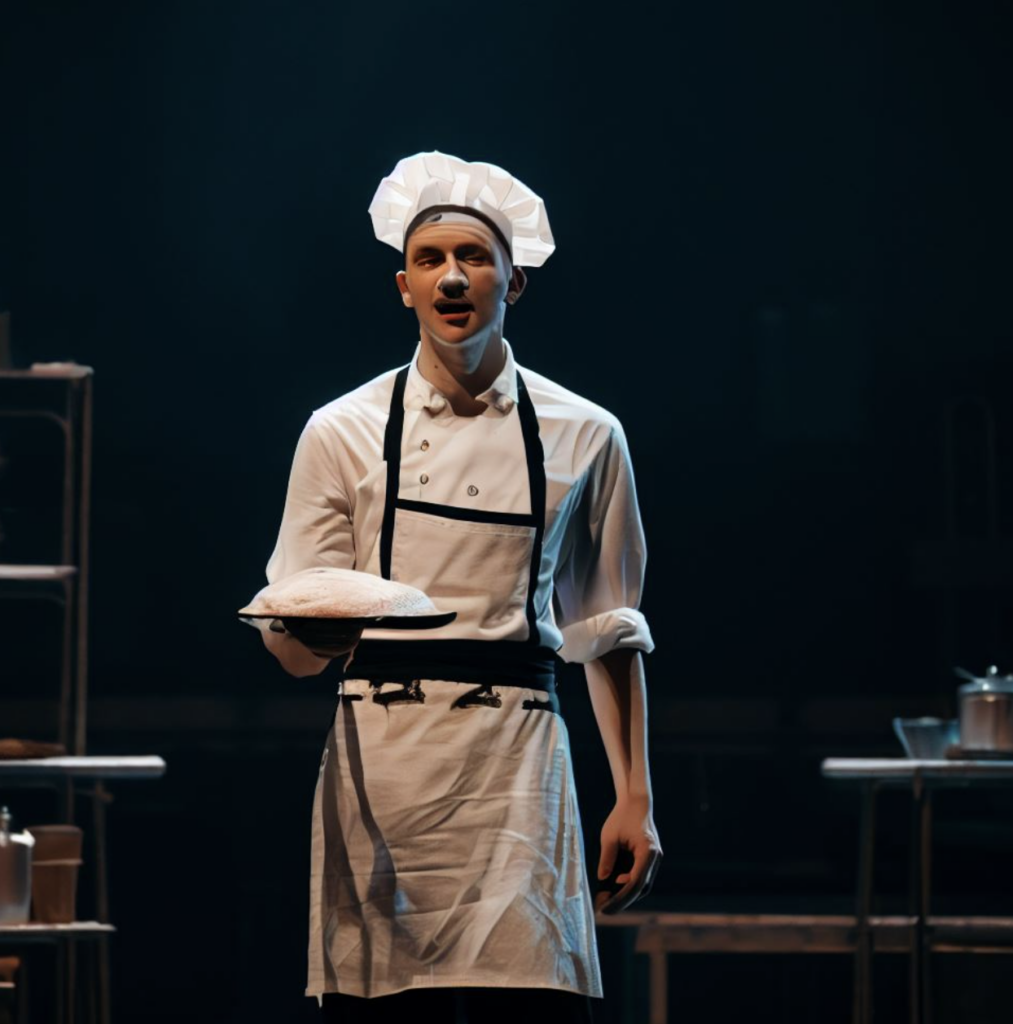
You might have had that “Aha!” moment while taking a cooking class, sailing, or maybe even sitting in a 7-Eleven munching on a hot dog. Surprisingly, my moment came at a Michelin-starred restaurant in France, specifically in the pastry section, and it taught me a life lesson that changed my perception of improvisational theater. Yeah, I didn’t see that coming either.
The Scales Don’t Lie
Now, for those of you not knee-deep in croissant dough or a theater script, let me set the scene. I was in this modern kitchen, all stainless steel and self-importance, watching culinary artists work their magic. The chefs were doing their usual, “Oh, a pinch of this, a smidgen of that,” type of deal. Enter the pastry chef, the “pâtissier,” a precision artist armed with digital scales, meticulous measurements, and a level of focus that would make a sniper envious.
Each gram of flour, sugar, and butter was weighed as if the fate of the universe hinged on that mille-feuille (it probably did). It was like watching a neurosurgeon at work, if the neurosurgeon was particularly concerned about the flavor profile of your cerebral cortex.
Improv Chefs and Pastry Scientists
Here’s the kicker. Most chefs improvise; they can throw in an extra clove of garlic or a splash of wine even when a dish is already bubbling away in the oven. Our pastry artist? Not so much. The second that soufflé is in the oven, it’s “bake or break,” baby! No changes, no do-overs. The commitment level? One hundred percent.
So how does all of this apply to the grand stage of improv? I’ve noticed that many improv beginners tend to act like the pastry chefs of the theater world. They want to meticulously weigh each line, gesture, and dramatic pause as if it were a pound of butter. There’s a desperate need for control, for having it all play out exactly as envisioned. But honey, that’s a recipe for a soufflé that won’t rise.
Let’s Mix It Up
Improv is more akin to the main course chefs, whipping up a culinary masterpiece on the fly, adjusting to the sizzle and pops of the ingredients—er, I mean the co-actors. You see, in improv, like in cooking, the best results often come from a blend of structure and spontaneity. We need to remember that it’s okay to adjust the seasoning as we go. That’s right; if you find that the plot is a little bland, don’t hesitate to throw in some unexpected spice!
The Shared Palate of Performance
Speaking of flavor, let’s talk about taste—yes, in theater as well as in food. An improv group is somewhat like a team of chefs working on a tasting menu; everyone should ideally share a similar palate, or in this case, a similar sense of humor and drama. When you all find the same things “cool,” well, that’s when you create scenes that could earn you a standing ovation, or at least spare you from a tomato barrage.
The Gourmet Conclusion
If there’s one thing to take away from my gastronomical journey through a French restaurant to the theatre stage, it’s this: Be more like a chef and less like a pastry chef when you’re in the unpredictable world of improv. Let your creativity simmer and adjust as needed. Be willing to sprinkle in a little improvisation to keep things fresh. After all, some of the best recipes were discovered by accident, and the same goes for some of the best performances. 🎭👨🍳